The Best Hiking Trails in Dinghu Mountain: Experience Breathtaking Views
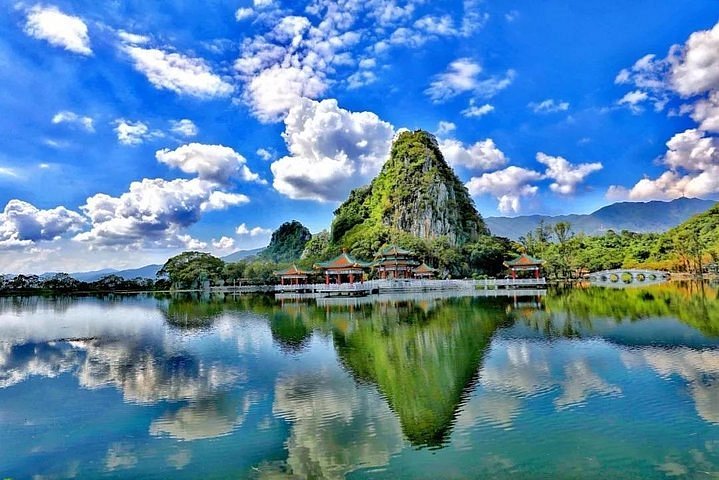
An Essential Guide to Visiting Dinghu Mountain
Nestled in the heart of Guangdong Province, Dinghu Mountain is a captivating blend of natural beauty, cultural heritage, and outdoor adventure, making it an essential destination for international travelers. This sprawling nature reserve, recognized as one of China’s first national parks, invites visitors to immerse themselves in lush landscapes, diverse wildlife, and tranquil waters. Whether you’re an avid hiker seeking to conquer its scenic trails or a leisure traveler eager to explore historical temples and picturesque valleys, Dinghu Mountain offers a unique experience for everyone.
As you embark on your journey, prepare to be enchanted by the mountain’s rich biodiversity, cascading waterfalls, and serene lakes that reflect the vibrant foliage. The park is not just a feast for the eyes; it’s a sanctuary for the soul, with opportunities to meditate in peaceful settings or savor the flavors of local cuisine. Accessible by public transport and well-maintained for visitors, Dinghu Mountain provides a refreshing escape from the bustling cities, inviting you to reconnect with nature.
In this guide, we’ll navigate through the must-see attractions, essential tips for your visit, and insights to make your trip to Dinghu Mountain truly unforgettable. Whether you’re planning a half-day excursion or a full-day adventure, prepare to discover the hidden gems of this natural wonderland.
In This Guide
- An Essential Guide to Visiting Dinghu Mountain
- The Rich History and Legends of Dinghu Mountain
- Main Highlights: What You Absolutely Can’t Miss
- Planning Your Visit: A Practical Guide
- Tickets: Prices, Booking, and Tips
- How to Get There: A Complete Transportation Guide
- Local Cuisine and Accommodation Nearby
- Frequently Asked Questions
- Final Thoughts on Your Trip
The Rich History and Legends of Dinghu Mountain
Nestled in the lush landscapes of Guangdong Province, Dinghu Mountain (鼎湖山) is not merely a destination for nature lovers; it is steeped in a rich tapestry of history and legends that dates back thousands of years. This majestic mountain, revered for its natural beauty and spiritual significance, forms part of the UNESCO Global Geopark and serves as a vital ecological site, housing diverse flora and fauna.
The history of Dinghu Mountain can be traced back to the Tang Dynasty (618-907 AD), when it was first recognized for its breathtaking vistas and tranquil environment. During this period, emperors and scholars frequented the area, seeking inspiration and solace amidst its serene landscapes. The name “Dinghu,” which translates to “Peak of Tranquility,” reflects the mountain’s peaceful ambiance that continues to captivate visitors today.
One of the most notable historical landmarks on Dinghu Mountain is the Qingyun Temple, established during the Song Dynasty (960-1279 AD). This ancient temple has been a place of worship for countless pilgrims over the centuries, fostering a deep sense of spirituality that permeates the area. The temple complex is renowned for its stunning architecture and intricate carvings, offering a glimpse into the craftsmanship of ancient Chinese artisans. Visitors can explore the temple grounds, absorbing the quiet reverence that still lingers in the air.
Legends surrounding Dinghu Mountain add an enchanting layer to its history. Local folklore speaks of various deities and spirits that inhabit the mountain, with tales of ancient hermits seeking refuge in its caves and valleys. Among these is the story of the “Butterfly Valley,” a magical realm said to be home to ethereal butterflies that bless those with pure hearts. This legend has inspired countless visitors to embark on hikes through the verdant trails, hoping to catch a glimpse of these mythical creatures.
Additionally, the grand waterfall that cascades down the mountainside is often associated with stories of love and longing, symbolizing the tears of a heartbroken maiden. It is said that if visitors make a wish at the base of the waterfall, their desires may be granted, adding a sense of wonder and hope to their journey.
Dinghu Mountain not only serves as a natural sanctuary but also as a cultural hub, where history and mythology intertwine. Its serene landscapes, ancient temples, and captivating legends create a unique experience for travelers, inviting them to explore both the physical beauty and the rich narratives that have shaped this remarkable place over centuries. Whether you are hiking its trails, meditating at a temple, or simply soaking in the breathtaking views, Dinghu Mountain offers an unforgettable journey through time, revealing the profound connection between nature, history, and legend.
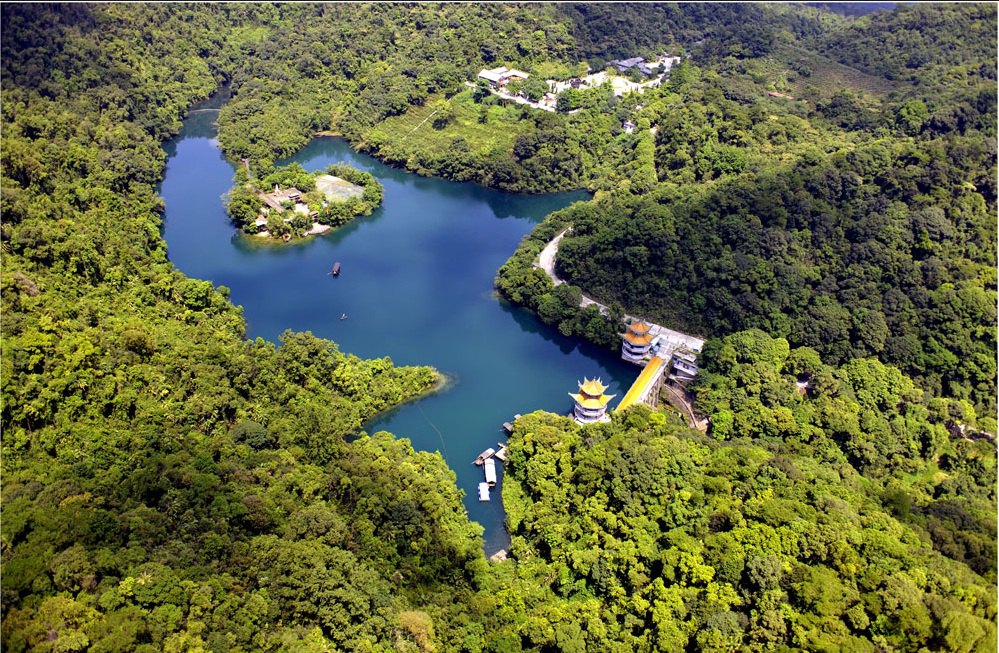
Dinghu Mountain.
Main Highlights: What You Absolutely Can’t Miss
Dinghu Mountain (鼎湖山) is a stunning natural paradise located in Zhaoqing, Guangdong Province, China. This expansive national park is famed for its lush landscapes, vibrant flora and fauna, and rich cultural heritage. Here are the must-see highlights that will make your visit to Dinghu Mountain unforgettable:
1. Dinghu Mountain Scenic Area
The heart of the park, this area offers a breathtaking blend of towering peaks and serene valleys. With well-marked trails and stunning vistas, it’s perfect for both leisurely strolls and more challenging hikes. Be sure to take advantage of the hop-on/hop-off electric buggies (for a small extra fee) to explore various key sites without exhausting yourself.
2. Butterfly Valley
A true gem within Dinghu Mountain, Butterfly Valley is best accessed via a scenic boat ride. Here, you can immerse yourself in nature as you hike through the forest to discover picturesque waterfalls. The hike takes about 30 minutes and while it includes some steep and uneven paths, it remains manageable for most visitors. Just be cautious of slippery areas!
3. Grand Waterfall
While the grand waterfall can vary in flow depending on the season, it’s still a sight to behold. Visiting during the dry season may mean a gentler trickle, but the smaller waterfalls in the area are equally charming and well worth a visit.
4. Qingyun Temple
Nestled within the mountain, this temple is a spiritual haven that invites visitors to explore its tranquil grounds. Be prepared for a workout as you ascend the many steps leading to the temple, but the peaceful atmosphere and cultural significance make the effort worthwhile. It’s an ideal spot to pause for reflection and prayer.
5. Tripod Park
Take a leisurely stroll through Tripod Park, where you’ll find a giant cooking pot sculpture alongside stunning views of Butterfly Island and the beautiful lake. This small park is a great place to relax and enjoy the natural beauty surrounding you.
6. Butterfly Island
A short boat trip will transport you to Butterfly Island, a delightful spot enclosed by a net where butterflies flutter freely. It’s a charming experience for nature lovers and perfect for a quick visit to appreciate the vibrant colors and delicate creatures.
7. Dinghu Lake
This picturesque lake offers scenic views and opportunities for photography. Whether you choose to relax by the water or take a boat ride, it’s a serene escape within the park.
8. Culinary Delights
Don’t miss the chance to savor local cuisine at one of the park’s eateries. A quick stop for a traditional bean curd snack will recharge your energy for further exploration.
9. Accessibility
Dinghu Mountain is conveniently located about an hour from the city center of Zhaoqing, making it easy to reach via public transport. The park is typically less crowded in December, allowing for a more serene experience.
10. Plan Your Visit
Allocate at least half a day to explore Dinghu Mountain, especially if you plan to pray at the temple or enjoy a meal. Given the vast area, days can easily be filled with hikes, sights, and relaxation.
Whether you’re a nature enthusiast, a culture seeker, or simply looking for a peaceful retreat, Dinghu Mountain offers a myriad of experiences that cater to all kinds of travelers. Make sure to include these highlights in your itinerary for a truly enriching adventure!
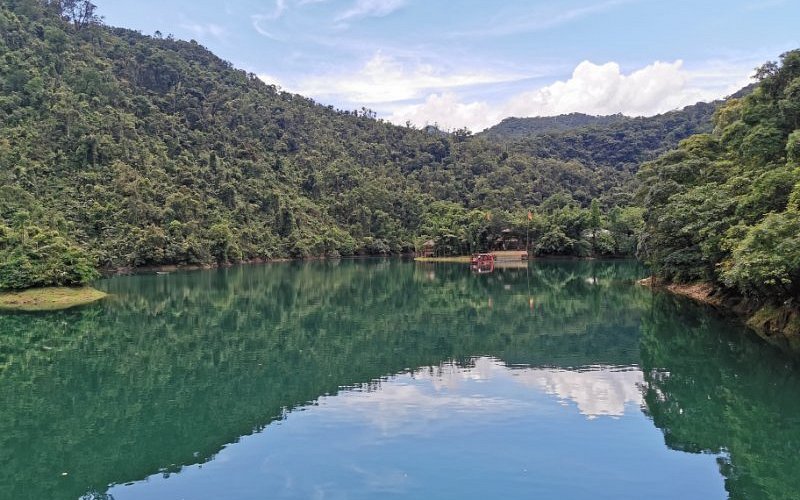
Dinghu Mountain.
Planning Your Visit: A Practical Guide
Planning Your Visit: A Practical Guide to Dinghu Mountain
Dinghu Mountain, located in the scenic Zhaoqing region of Guangdong Province, is a natural wonder that draws visitors with its lush landscapes, towering peaks, and rich biodiversity. Whether you’re trekking through its trails, exploring ancient temples, or taking in the breathtaking views, there’s something here for every kind of traveler. Here’s everything you need to know to make the most of your visit.
Getting There
Location:
Dinghu Mountain Resort is situated approximately 1 hour from Zhaoqing city center, making it easily accessible via public transport. Buses regularly depart from Zhaoqing to the park, allowing you to enjoy a worry-free journey through the beautiful countryside.
Entry Fee:
There is an entrance fee to access the park, plus additional charges for certain activities, like the electric buggies and boat rides. As of 2023, the buggy service costs around RMB 20, which is a small price to pay for saving energy on the uphill climbs.
Best Time to Visit
The ideal time to visit Dinghu Mountain is during the dry season, typically in late autumn to early spring (October to March). During this period, the weather is cooler, and the park is less crowded, allowing for a more peaceful experience. Keep in mind that the waterfalls may be less impressive in dry months, so plan accordingly.
What to Expect
Dinghu Mountain offers a variety of attractions and activities:
-
Trails and Hikes:
The park features several trails ranging from easy walks to more challenging hikes. Notably, the trek to Butterfly Valley combines a scenic boat ride followed by a 30-minute hike through lush forests to see beautiful waterfalls. While the hike is generally manageable, some areas may have steep and uneven steps, so wear appropriate footwear. -
Electric Buggies:
For those who prefer not to hike, buggies are available to transport you between key sites in the park. This option is especially useful for families or those with limited mobility. -
Butterfly Island:
A short boat ride will take you to Butterfly Island, where you can observe a variety of butterflies in a netted area. The boat trip is an extra charge but provides a unique experience. -
Temples and Cultural Sites:
The park is home to several temples, including the Qingyun Temple, which boasts thousands of steps leading up to its serene grounds. If you plan to pray or spend time at the temple, allocate extra time for your visit.
Tips for a Smooth Experience
-
Plan Your Time:
A half-day visit (approximately 4-5 hours) is usually sufficient to see most of the sights, but if you want to explore thoroughly, consider dedicating a full day. Don’t forget to take breaks to enjoy local snacks or meals; the nearby RongHua Restaurant offers delicious Cantonese cuisine. -
Stay Hydrated and Prepared:
Bring water and snacks, especially if you plan to hike. The humid jungle atmosphere can be taxing, and staying hydrated is crucial for enjoying your adventure. -
Safety First:
Some trails can be slippery, particularly after rain. Exercise caution and take your time navigating uneven terrain. -
Respect Nature:
Dinghu Mountain is a protected area, so please follow park guidelines, dispose of trash properly, and refrain from smoking.
Final Thoughts
Dinghu Mountain is a blend of natural beauty and cultural heritage, making it a must-visit destination for international travelers seeking an escape from China’s bustling cities. With its diverse activities and stunning scenery, you’ll come away with unforgettable memories. Prepare accordingly, and immerse yourself in the tranquility and wonder of Dinghu Mountain!
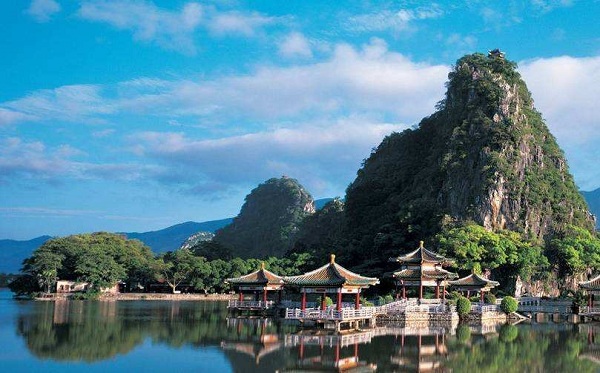
Dinghu Mountain.
Tickets: Prices, Booking, and Tips
When planning your visit to Dinghu Mountain, it’s essential to stay informed about ticket prices, booking options, and handy tips to make the most of your experience.
Ticket Prices
The entrance fee for Dinghu Mountain Resort is approximately RMB 30. This fee grants you access to the stunning natural landscapes, hiking trails, and key attractions within the park. For those looking to save time and energy, electric buggies are available for an additional charge of around RMB 20. These buggies operate on a hop-on/hop-off basis and can take you to various key sites throughout the park.
Booking Options
While tickets can be purchased directly at the entrance, pre-booking is recommended during peak seasons to avoid lengthy queues. Various private tours are also offered, starting from RMB 200 for a day trip to Dinghu Mountain, which typically includes transportation and sometimes additional experiences like guided hikes or visits to nearby attractions. Websites such as TripAdvisor or local tour operators provide a range of options that cater to different preferences and budgets.
Tips for Your Visit
-
Timing: The park is open daily from 8:00 AM to 7:30 PM. Arriving early allows you to enjoy the serene landscapes before the crowds gather. A half-day visit is usually sufficient to cover the main sights, but consider allocating more time if you plan to enjoy leisurely meals or visit the temples.
-
Transportation: Dinghu Mountain is easily accessible via public transport, with buses running from the city center to the park in about an hour. If you prefer a more comfortable journey, consider booking a private transfer or joining a guided tour.
-
Hiking Gear: While the paths are generally accessible, some trails, particularly around Butterfly Valley, can be steep and uneven. Wearing sturdy footwear is advisable, and be cautious of slippery areas, especially during rainy seasons.
-
Seasonal Considerations: The park’s waterfalls may vary in volume depending on the season. For instance, visiting during the dry season may result in less impressive waterfall views, while the lush greenery of the wet season can enhance the park’s beauty.
-
Food Options: There are limited dining options within the park. If you plan to eat, consider packing snacks or planning for a meal at a nearby restaurant after your visit.
With these insights, your adventure at Dinghu Mountain is sure to be memorable. Embrace the beauty of nature, explore the rich landscapes, and enjoy a day filled with exploration!
How to Get There: A Complete Transportation Guide
Reaching Dinghu Mountain, a stunning natural paradise located in Zhaoqing, Guangdong Province, is straightforward and offers several transport options for international travelers. Here’s how you can make your way to this breathtaking destination.
By Air
The nearest major airport is Guangzhou Baiyun International Airport (CAN), which is approximately 120 kilometers (75 miles) from Dinghu Mountain. From the airport, you have a couple of options:
-
Airport Shuttle Bus: Take an airport shuttle bus to Guangzhou city center. From there, head to the Guangzhou South Railway Station to catch a train to Zhaoqing.
-
Taxi: Direct taxis or ride-hailing services like Didi can take you from the airport straight to Dinghu Mountain, but be prepared for a longer journey and higher cost.
By Train
Zhaoqing has a well-connected railway station, making it easy to travel from major cities:
-
From Guangzhou: Trains from Guangzhou South Railway Station to Zhaoqing Railway Station take about 1.5 hours. Once you arrive at Zhaoqing, you can take a bus or taxi directly to Dinghu Mountain.
-
From Shenzhen: You can also catch a train to Zhaoqing, which typically takes around 2 hours.
Upon reaching Zhaoqing Railway Station, you can either take a local bus or a taxi to Dinghu Mountain. Buses are frequent and affordable, taking approximately 30 to 40 minutes to reach the park entrance.
By Bus
For budget-conscious travelers, buses are available from various locations:
-
From Guangzhou: Long-distance buses depart from Guangzhou’s Provincial Bus Station and Tianhe Bus Station to Zhaoqing. The journey usually takes about 2 hours.
-
From Zhaoqing City: Local buses frequently operate from Zhaoqing city center to Dinghu Mountain, taking around 1 hour. Look for buses heading to Dinghu Mountain Resort, and be sure to check the schedule, as it may vary.
Getting Around Dinghu Mountain
Once you arrive at Dinghu Mountain, the park offers several options to explore its vast area:
-
Electric Buggies: For a small fee (around RMB 20), you can hop on one of the electric buggies that transport you to various key locations within the park. This is especially useful if you want to save energy for hiking or exploring the scenic areas.
-
Hiking: Dinghu Mountain is known for its beautiful trails, though be prepared for steep climbs and uneven terrain. For those who are fit and adventurous, hiking is a rewarding way to experience the natural beauty.
-
Boat Rides: Don’t miss the boat ride to Butterfly Island, which offers a short but delightful excursion into nature. The boat trip is an additional fee but well worth it for the views.
Tips for Your Journey
-
Timing: Try to visit during the dry season (October to December) for the best conditions and fewer crowds.
-
Plan Your Day: If you wish to explore the temples or enjoy a meal at the park, consider allocating a full day for your visit.
-
Check Local Transport Schedules: Bus and train schedules can vary, so it’s a good idea to confirm times ahead of your journey.
With its breathtaking landscapes and rich biodiversity, Dinghu Mountain is a must-visit destination in China. Whether you choose to fly, take a train, or hop on a bus, you’ll find that getting there is part of the adventure. Enjoy your trip!
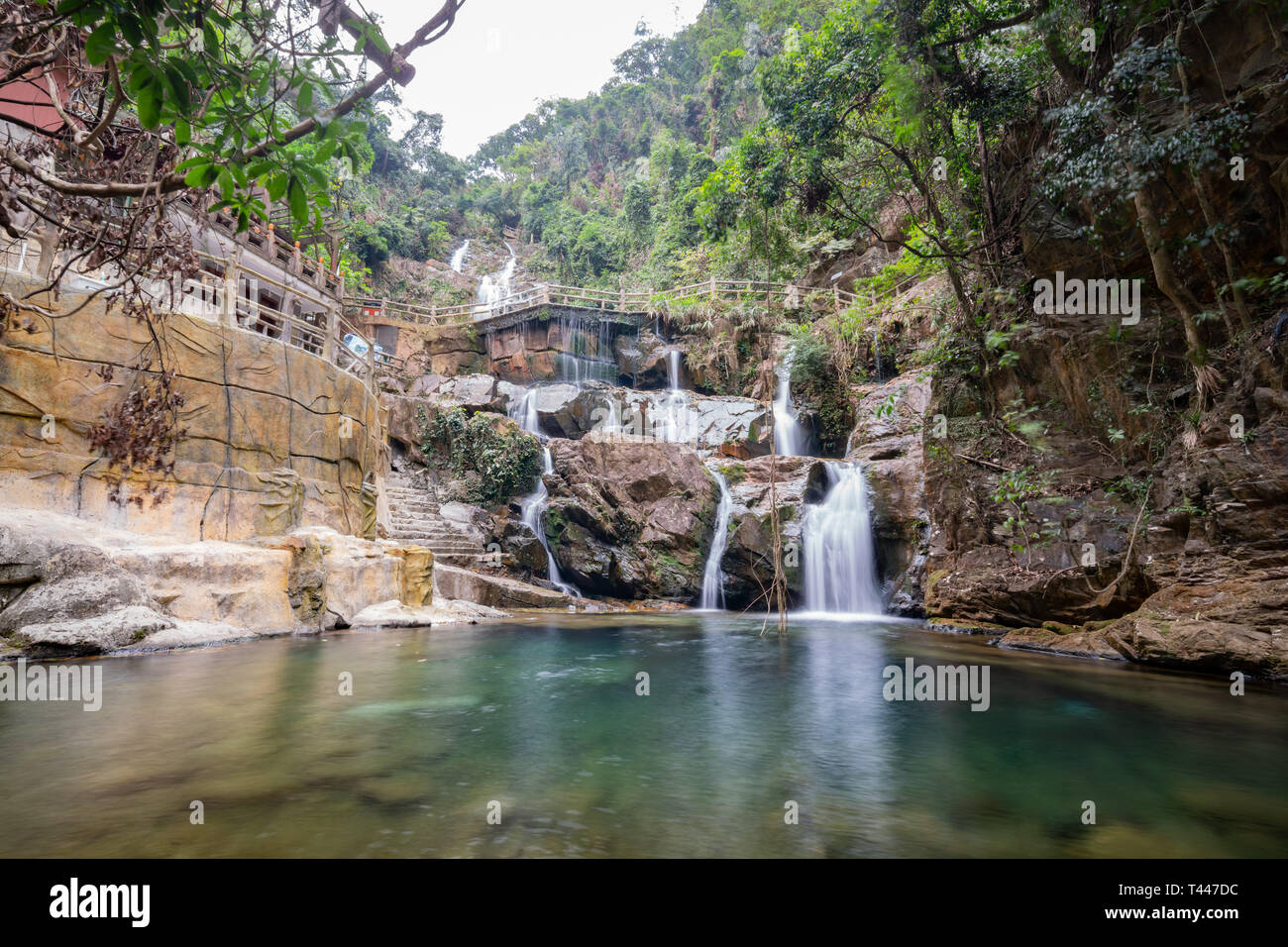
Dinghu Mountain.
Local Cuisine and Accommodation Nearby
When visiting the stunning Dinghu Mountain, your experience can be greatly enhanced by indulging in local cuisine and finding a comfortable place to stay nearby. The region is rich in both culinary delights and accommodation options that cater to different preferences and budgets.
Local Cuisine
RongHua Restaurant
Just a short distance from Dinghu Mountain, RongHua Restaurant offers a delightful introduction to Cantonese cuisine. With a menu that features a variety of traditional dishes, you’ll have the chance to savor local flavors that are both authentic and satisfying. Popular items include steamed fish, stir-fried seasonal vegetables, and, of course, delicious dim sum. Whether you’re looking for a quick meal after a hike or a leisurely dining experience, RongHua is an excellent choice.
Street Food Stalls
For those seeking a more casual dining experience, the area surrounding Dinghu Mountain has several street food stalls where you can try local snacks. Look out for dishes like cheung fun (rice rolls) and baozi (steamed buns), which are popular among locals and sure to tantalize your taste buds. This is a great way to experience the culture while enjoying some affordable eats.
Accommodation Options
Dinghu Mountain Resort
For a convenient and immersive experience, consider staying at Dinghu Mountain Resort, which is located right at the foot of the mountain. This resort provides comfortable accommodations with beautiful views of the surrounding landscape. Guests can enjoy on-site dining options, making it easy to refuel after a day of exploring. The resort is well-maintained and offers various amenities, ensuring a pleasant stay.
Local Guesthouses
If you’re looking for a more intimate experience, local guesthouses in Zhaoqing offer a cozy alternative. These guesthouses typically feature traditional Chinese architecture and warm hospitality. Staying at a guesthouse allows you to connect with local culture and often includes breakfast, where you can enjoy homemade dishes prepared with fresh ingredients.
Budget Hotels
For budget-conscious travelers, there are several affordable hotels in Zhaoqing that provide basic amenities and comfortable lodging. Many of these hotels are located within easy access to public transport, making it convenient to visit Dinghu Mountain and other nearby attractions.
No matter your taste or budget, the area around Dinghu Mountain has something to offer everyone. Pair your mountain adventures with delicious local cuisine and a cozy place to rest, and your trip to this beautiful destination will be truly unforgettable!
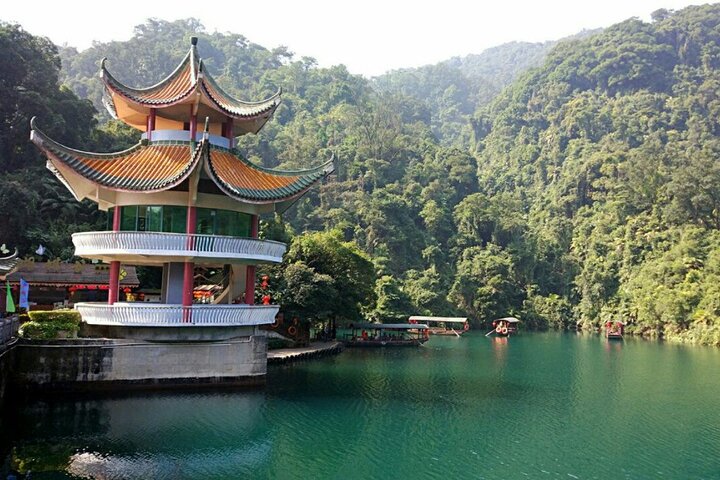
Dinghu Mountain.
Frequently Asked Questions
Frequently Asked Questions About Dinghu Mountain
-
What is the best time to visit Dinghu Mountain?
The ideal time to visit Dinghu Mountain is during the dry season, typically from October to March. This period generally offers pleasant weather and fewer crowds. However, be mindful that some waterfalls may not be as impressive in the dry season. -
How do I get to Dinghu Mountain from Zhaoqing city center?
Dinghu Mountain is easily accessible via public transport. You can take a bus from Zhaoqing city center, which usually takes about one hour. Alternatively, taxis or rideshare services are also available for a more direct route. -
Are there any entrance fees?
Yes, there is an entrance fee to access Dinghu Mountain Resort. Additionally, if you wish to use the electric buggies to navigate the park, there will be an extra charge of approximately RMB 20. -
Is hiking difficult at Dinghu Mountain?
While there are various trails, some sections can be steep and uneven, requiring moderate physical fitness. If you’re not an experienced hiker or prefer to save energy, you can use the electric buggies to reach key sites. -
Can I see all the attractions in one day?
Yes, many visitors find they can cover the main attractions within half a day, typically from around 8:30 AM to 1 PM. If you plan to spend more time at the temple or enjoy a meal, you may want to allocate a full day for your visit. -
What should I wear and bring for my visit?
Comfortable walking shoes are essential due to the uneven terrain. Dress in layers to accommodate changing temperatures, and bring water, snacks, and a camera to capture the stunning scenery. Don’t forget sunscreen and insect repellent, especially if you plan to hike. -
Are there dining options available at Dinghu Mountain?
There are limited dining options within Dinghu Mountain Resort. While you can find a few snack stalls, it’s advisable to bring your own food or plan to eat in Zhaoqing before or after your visit for a more extensive meal. -
What are the highlights of Dinghu Mountain that I shouldn’t miss?
Key attractions include the Butterfly Valley for its scenic hikes and waterfalls, the various temples scattered throughout the park, and the breathtaking views from the Tripod Park. Consider taking a boat ride to Butterfly Island for a unique experience with butterflies.
Final Thoughts on Your Trip
As your adventure at Dinghu Mountain comes to a close, take a moment to reflect on the unforgettable experiences you’ve gathered amidst its lush landscapes and tranquil temples. This hidden gem in Guangdong Province offers a unique blend of natural beauty and cultural richness, making it a perfect escape from the hustle and bustle of city life. Whether you traversed the scenic trails, marveled at the gentle waterfalls, or indulged in a moment of serenity at the temple, each moment spent here adds a touch of tranquility to your travels.
For those seeking a bit of adventure, the uphill trek rewards you with breathtaking views and the invigorating embrace of nature. If relaxation is more your style, the electric buggies and serene boat rides ensure you can savor the beauty without the exertion. No matter how you choose to explore, Dinghu Mountain invites you to connect with its vibrant ecology and rich heritage.
As you journey onward, carry with you the peace and inspiration drawn from this stunning destination. Let the memories of Dinghu Mountain remind you of the beauty that lies in both nature and culture, awaiting discovery in every corner of the globe. Happy travels, and may your next adventure be just as enriching!